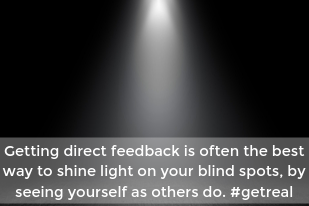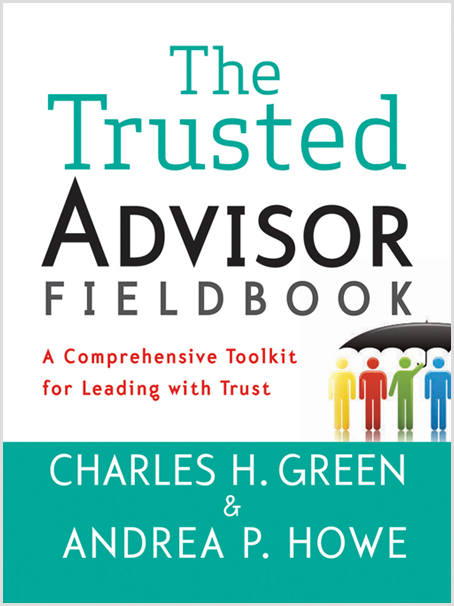This post is part of our Monthly-ish Tips series.
 There are a few really important things we go to work on in our deep dive workshops on trusted advisorship and trust-based selling and one of them is uncovering blind spots. This week’s tip offers three specific ways you can do a little self-study on the topic. And by the way, if you think you don’t have any blind spots, read on; that might be your biggest and most worrisome blind spot.
There are a few really important things we go to work on in our deep dive workshops on trusted advisorship and trust-based selling and one of them is uncovering blind spots. This week’s tip offers three specific ways you can do a little self-study on the topic. And by the way, if you think you don’t have any blind spots, read on; that might be your biggest and most worrisome blind spot.
Blind spots are things about you that others see but you don’t. And they’re problematic for at least two reasons: (1) we all have them and (2) we tend to act automatically from them—and usually not in trust-building ways. Interesting and troubling side note: Did you know that the higher you climb on the corporate ladder the more your self-awareness and emotional intelligence are likely to decline?
Here are a few examples of blind spots, inspired by my own personal inventory:
- You don’t realize how much you wish to be liked. This can keep you from speaking difficult truths, which, in turn, lowers your credibility and your overall trustworthiness. When you see the imperative to develop comfort and skill with saying unpopular things, you can then expand your risk-taking portfolio and practice using caveats to deliver tough messages.
- You underestimate the negative impact of your own internal drive to achieve. In this case, you’ll habitually move too quickly from listening to problem-solving—compromising both the quality of your solution and the quality of your relationship. Once you know it, you can slow down the conversation with masterful listening techniques and devise tactics like crossing your fingers as a reminder that you have something to say—later.
- You don’t really get just how much you dislike feeling unprepared. Over-preparedness can make it hard to engage in messy collaboration, which is sometimes the purest form of client partnership. When you’re aware of this, you can actually practice improvising to get more comfortable with it, drill your reactions during a moment of truth through role-playing, and become adept at thinking out loud.
Getting direct feedback is often the best way to shine light on your blind spots, by seeing yourself as others do. For example, you could:
- Role play an exploratory five-minute client conversation with a colleague, and ask an observer to make specific notes on how many times you steer the conversation towards a solution. I’m guessing you’ll be very surprised.
- Ask people directly about your blind spots, as in, “What is the one blind spot you think I have that I should be more aware of?” (Thanks go to Marissa Levin’s article in for this simple yet profound suggestion.)
- A third useful approach is self-reflection. For example, bring a difficult client relationship to mind and sit down with the five questions to unlock any client relationship issue. Often what frustrates us the most about others is a clue to something we don’t see in ourselves.
None of this is child’s play. It takes confidence, humility, and ego strength.
And so it is with trusted advisorship.
Make It Real
This week, choose one of the three approaches above for shining a light on your blind spots. What do you learn?
Learn More

Watch why it’s so important to check your ego at the door (Trust Tip #12 from our friends at Trusted Advisor Associates) or brush up on all five trust skills in Chapter 5 of The Trusted Advisor Fieldbook.
Andrea Howe
Latest posts by Andrea Howe (see all)
- Why choosing silence in the face of awkwardness can be a trust tragedy - March 21, 2024
- What NOT to do when you think you’re being ghosted - February 21, 2024
- Reprise: If you’ve resolved to have better client relationships this year, great, now ditch your resolution - January 2, 2024
